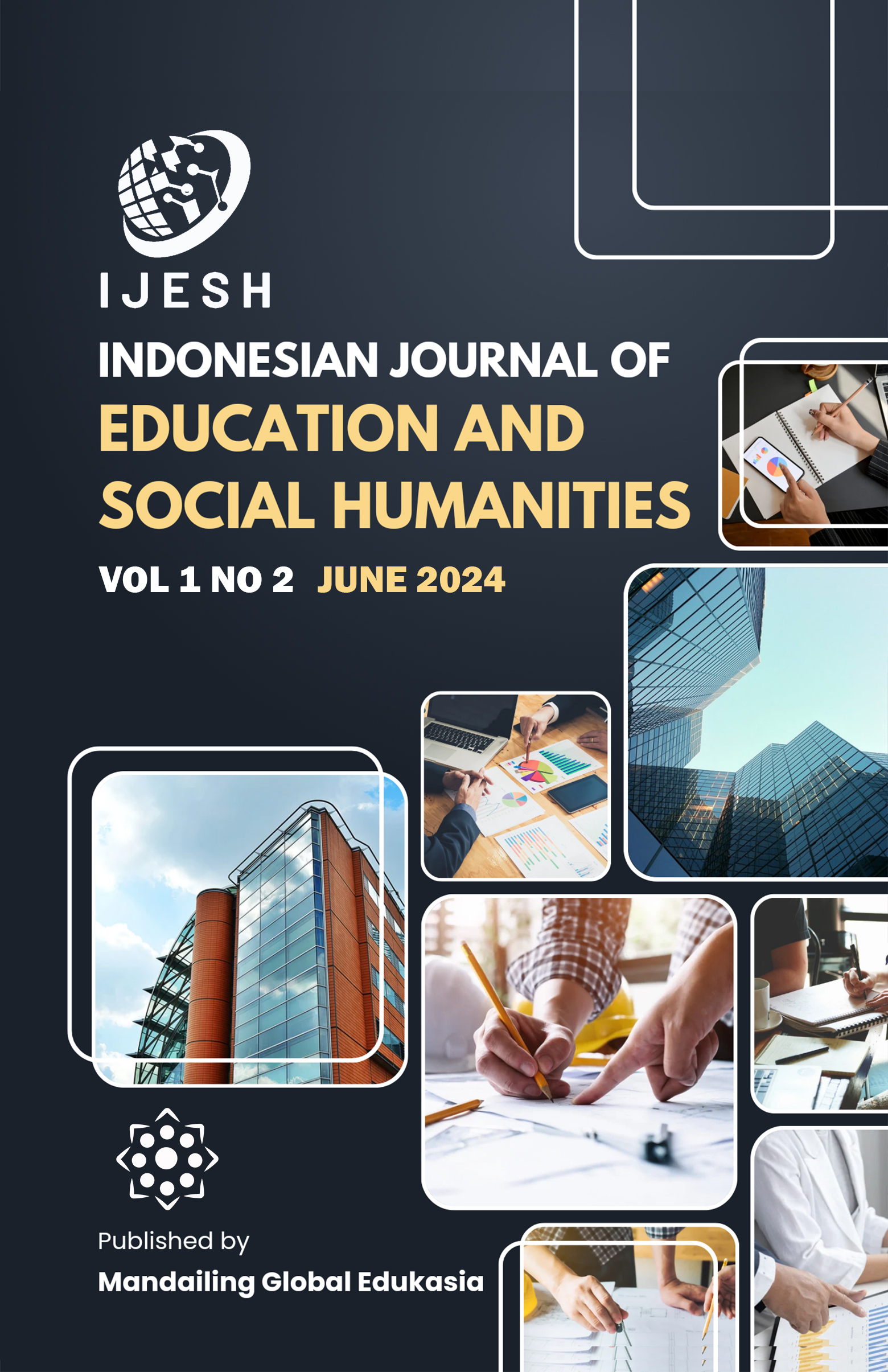Implementation of the Scaffolding Approach to Improve Student Learning Outcomes in Islamic Education Learning at SMP Negeri 1 Kolang
DOI:
https://doi.org/10.62945/ijesh.v1i2.704Keywords:
Scaffolding, islamic education learning, digital generation, student characterAbstract
This study aims to analyze the application of scaffolding material in improving Islamic Religious Education (PAI) learning outcomes on the material Believing in the Prophets and Messengers of Allah, and how the application can shape the character of a digital generation with noble morals among grade 8 students of UPTD SMP Negeri 1 Kolang, Kolang District, Central Tapanuli Regency. Scaffolding is a learning approach that provides gradual guidance to students according to their level of understanding, so that they can achieve independence in learning. The research method used is a qualitative method with a descriptive approach, where data is collected through observation, interviews, and documentation. The results of the study showed that the application of scaffolding strategies in PAI learning significantly improved students' understanding of the material Believing in the Prophets and Messengers of Allah. Students become more active in the learning process, are able to think critically, and better understand and internalize the values of Islamic teachings in everyday life. In addition, the use of scaffolding also helps students face the challenges of the digital era by forming characters based on Islamic values, such as honesty, responsibility, and mutual respect. Thus, this strategy is an effective solution in improving the quality of Islamic Religious Education learning and forming the character of a digital generation with morals.
Downloads
References
Arends, R. I. (2012). Learning to Teach. McGraw-Hill Education.
Ausubel, D. P. (2000). The Acquisition and Retention of Knowledge: A Cognitive View. Springer.
Bandura, A. (1986). Social Foundations of Thought and Action: A Social Cognitive Theory. Prentice-Hall.
Bransford, J. D., Brown, A. L., & Cocking, R. R. (2000). How People Learn: Brain, Mind, Experience, and School. National Academy Press.
Creswell, J. W. (2014). Research Design: Qualitative, Quantitative, and Mixed Methods Approaches. SAGE Publications.
Duffy, G. G., Roehler, L. R., & Putnam, J. (1987). Scaffolding Instruction for Reading Comprehension Strategies. Cognition and Instruction, 4(3), 177-200.
Gagne, R. M. (1985). The Conditions of Learning and Theory of Instruction. Holt, Rinehart & Winston.
Gredler, M. E. (2009). Learning and Instruction: Theory into Practice. Pearson.
Hammond, J. (2001). Scaffolding: Teaching and Learning in Language and Literacy Education. Primary English Teaching Association.
Harmer, J. (2007). How to Teach English. Pearson Longman.
Hattie, J. (2009). Visible Learning: A Synthesis of Over 800 Meta-Analyses Relating to Achievement. Routledge.
Jonassen, D. H. (1999). Designing Constructivist Learning Environments. Routledge.
Kuhlthau, C. C. (2004). Seeking Meaning: A Process Approach to Library and Information Services. Libraries Unlimited.
Lave, J., & Wenger, E. (1991). Situated Learning: Legitimate Peripheral Participation. Cambridge University Press.
Marzano, R. J. (2003). What Works in Schools: Translating Research into Action. ASCD.
Merriam, S. B. (2009). Qualitative Research: A Guide to Design and Implementation. Jossey-Bass.
Piaget, J. (1954). The Construction of Reality in the Child. Basic Books.
Rogoff, B. (1990). Apprenticeship in Thinking: Cognitive Development in Social Context. Oxford University Press.
Slavin, R. E. (2011). Educational Psychology: Theory and Practice. Pearson.
Stake, R. E. (1995). The Art of Case Study Research. SAGE Publications.
Stiggins, R. J. (2017). The Perfect Assessment System. ASCD.
Sweller, J. (1988). Cognitive Load Theory, Learning Difficulty, and Instructional Design. Learning and Instruction, 4(4), 295-312.
Tharp, R. G., & Gallimore, R. (1988). Rousing Minds to Life: Teaching, Learning, and Schooling in Social Context. Cambridge University Press.
Tomlinson, C. A. (2001). How to Differentiate Instruction in Mixed-Ability Classrooms. ASCD.
Vygotsky, L. S. (1978). Mind in Society: The Development of Higher Psychological Processes. Harvard University Press.
Wiggins, G. P., & McTighe, J. (2005). Understanding by Design. ASCD.
Wood, D., Bruner, J. S., & Ross, G. (1976). The Role of Tutoring in Problem Solving. Journal of Child Psychology and Psychiatry, 17(2), 89-100.
Yin, R. K. (2018). Case Study Research and Applications: Design and Methods. SAGE Publications.
Yelland, N. (2006). Shift to the Future: Rethinking Learning with New Technologies in Education. Routledge.
Zimmerman, B. J. (2002). Becoming a Self-Regulated Learner: An Overview. Theory into Practice, 41(2), 64-70.
Downloads
Published
How to Cite
Issue
Section
License

This work is licensed under a Creative Commons Attribution-ShareAlike 4.0 International License.









